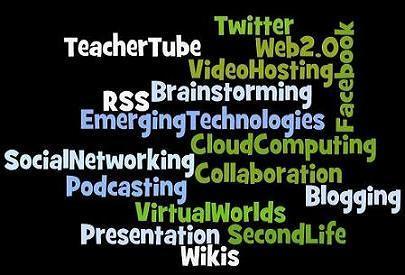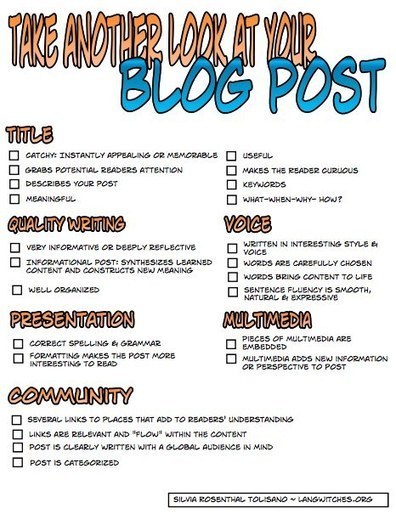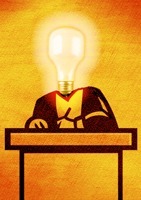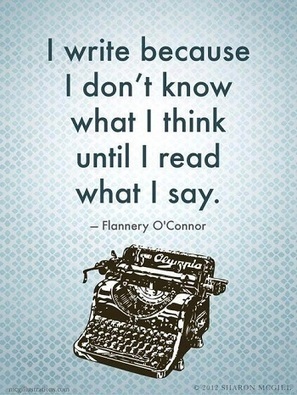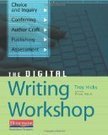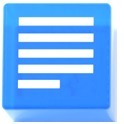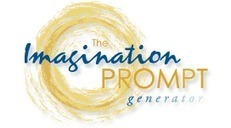 Your new post is loading...
 Your new post is loading...

|
Rescooped by
Jim Lerman
from Teaching and Assessing Writing
June 2, 2013 7:22 PM
|
Margaret Bigger knows a tale when she hears one. For 29 years, she has been recording either her own stories, her family’s or other people’s tales of war, prohibition, weddings, funerals and church-going, self-publishing and editing collections of stories, or writing books of her own. A good listener and writer and a mentor-like editor, Bigger has written or edited 24 books in her 73 years. But it is her book “Recalling Your Memories on Paper, Tape or Videotape,” published in 1996 and now in its second printing, that launched her career as a teacher about saving memories and creating memoirs. Across a tray of hot tea, the Southern author recently talked from her Foxcroft East home about teaching others. “Actually, I was teaching the class over and over again and thought it would be good to write a book and use some of my students’ experiences to make it much more interesting,” she said. “So I sort of backed into the book from teaching.” Bigger has taught the memory-writing course since 1989 at Central Piedmont Community College, Queens University of Charlotte, the Shepherd’s Center in Charlotte, at retirement centers in three states and as an annual fundraiser for the Charlotte Writers’ Club.
Read more here: http://www.charlotteobserver.com/2013/01/12/3777487/author-teaches-writing-down-memories.html#storylink=cpy
Via Charles Tiayon, Susan Golab

|
Rescooped by
Jim Lerman
from Teaching and Assessing Writing
June 2, 2013 7:27 PM
|
This collaboratively written article provides some great ideas for leveraging today's mobile technologies to help students enhance those vital writing
Via Dr. Tom D'Amico (@TDOttawa) , Susan Golab

|
Scooped by
Jim Lerman
June 1, 2013 12:17 AM
|
According to today’s infographic, writing can serve as a calming, meditative tool. Stream of conscious writing exercises, in particular, have been identified as helpful stress coping methods. Keeping a journal, for example, or trying out free-writing exercises, can drastically reduce your levels of stress.

|
Scooped by
Jim Lerman
August 27, 2013 1:26 PM
|
Social media consulting for nonprofits

|
Rescooped by
Jim Lerman
from Serious Play
April 27, 2013 1:47 AM
|
Popular social media websites can be used as legitimate research tools, complimenting the traditional methods, and they can help students prepare when writing their essays and assignments. Here are some of the best social networks and ways they can help improve your writing and research
Via Ariana Amorim

|
Rescooped by
Jim Lerman
from Writing Tools Web 3.0
January 28, 2013 12:09 AM
|

|
Rescooped by
Jim Lerman
from :: The 4th Era ::
December 28, 2012 7:36 PM
|
“A teacher who is attempting to teach without inspiring the pupil with a desire to learn is hammering on a cold iron.” Horace Mann "Recently I came across a beautifully written ode to creativity written by @RealDavidCameron – see here. Please read it in all of its resplendent glory. The article, appropriate for our austere times, and rather bankrupt political leadership, is not all sweetness and light. Birth weight and poverty are recognized as near intractable factors that inhibit learning, but the driving force of the article resides in the transformative power of education. This was connected to another article by an inspiring school leader, Tom Sherrington – the @headguruteacher – with this article on creativity here: Teaching for Creativity and Innovation. Now, let me admit, when I sometimes hear the term ‘creativity’ used regarding education I wince slightly. ‘Passion’ and ‘creativity’ have become easy labels used across public and private sectors, becoming appropriated by advertisers, regardless of whether those qualities are exhibited or not, like some empty corporate mantra. When people laud Sir Ken Robinson I cannot but agree with his inspired speeches, but without action those words ring hollow. What leaders like Tom Sherrington and people like David Cameron do is put meat onto the bones of the creativity mantra in a real and valuable. They shine a light on creativity in practice and thereby encourage us to bask in the glow and feed the flame,"
Tweet Student blogging is not a project, but a process. We are continuously striving to refine, improve and re-evaluate. One of my favorite writes, Silvia Rosenthal Tolisano, explores how to help kids write in digital spaces. Features a checklist of factors that contribute to quality of writing. Design Drivers: Learning
Via GBS Digital Learning Pilot
Writing is one of the key literacy learning skills.
For many learners it can also be one of the most challenging.
The way learning Providers teach 'writing' has alot to do with their learners attitude; if they can find engaging and collaborative ways to teach writing then, their learners writing performance will be enhanced.
One strategy is to use technology.
For learners, generating ideas is often the most difficult phase of their writing process.
This is where Plinky can help.
Every day Plinky provides a new prompt (like a question, or a challenge), and everyone gets a chance to answer.
Users can...
- add photos, maps, playlists and more.
- easily share their Plinky answers on Facebook, Twitter, WordPress, Tumblr, and most major blogging services.
In their words...
"We know you've got something interesting to say. Plinky is here to help you say it in a fun and compelling way."
Via John Dalziel, Lynnette Van Dyke

|
Rescooped by
Jim Lerman
from An Eye on New Media
August 16, 2012 12:14 AM
|
Not only do we need skills for expository, creative, persuasive and technical writing, but we often write about topics for which we know very little at first. Furthermore, our writing is expected to be motivating while clearly delivering concepts, procedures and facts.
Here you’ll find some brief guidelines that focus on each type of writing. Much of this writing is done in storyboards, so I didn’t include writing for storyboards as a separate type. What other types of writing for eLearning can you think of?
Via Alfredo Calderón, Ken Morrison
|

|
Rescooped by
Jim Lerman
from Teaching and Assessing Writing
June 2, 2013 7:28 PM
|
Is traditional reading and writing enough to be considered literate in the 21st century? Check out this slideshow from Silvia Rosenthal Tolisano which asks us to "rethink our notion of critical literacy." She also suggests that we "develop authentic learning and assessment opportunities {as we} upgrade and amplify our curriculum."
Via Beth Dichter, Susan Golab

|
Rescooped by
Jim Lerman
from Teaching and Assessing Writing
June 2, 2013 7:29 PM
|
An interesting discussion on ways to make writing an authentic experience for your students. Ideas include writing for the school newsletter, publishing ebooks, writing ne ws reports, creating textbooks for ohter grades levels and much more. Check it out for ideas and add your thoughts to the comment section.
Via Beth Dichter, Susan Golab

|
Rescooped by
Jim Lerman
from Eclectic Technology
June 15, 2013 11:59 PM
|
In 2008, Fran Simmons, an English teacher at NewDorpHigh School in New York—at that time one of the lowest-performing secondary institutions in the nation— devised a simple test for her students in an effort to keep district officials from pulling the plug. First, she asked her freshman class to read Of Mice and Men. Then, using information from the novel, she asked them to answer the following prompt in a single sentence: “Although George …” She was looking for a sentence like: Although George worked very hard, he could not attain the American Dream. What Simmons received was alarming in the truest sense of the word. Some students wrote passable sentences, but many could not manage to finish the line. More than a few wrote the following: “Although George and Lenny were friends.”
Via Beth Dichter

|
Rescooped by
Jim Lerman
from Teaching Creative Writing
April 30, 2013 5:07 PM
|

|
Rescooped by
Jim Lerman
from Eclectic Technology
September 3, 2014 12:35 AM
|
"The Common Core’s Anchor Standard 6 for writing in grades K–12 requires students to “use technology, including the Internet, to produce and publish writing and to interact and collaborate with others”. Here are some ideas for meeting this standard (besides the obvious use of technology—word processing).
Via Beth Dichter
Description by The Scout Project "Story Builder is designed to make writing fun for students. Users can name up to 10 different characters. They may then enter text from each character, building a story. At the end, they may set their story to music and watch it all play out on the screen. To use the Story Builder, simply select "Get Started." Then enter character names in the boxes on the left hand side of the screen. From there, you may enter the text for each character. Next, choose from seven different styles of music. Once you have selected music, the story will begin to play, accompanied by the soundtrack. Students may also give the story a title and get a short link, which can then be shared. The program is best used with elementary and middle school students."
Via Dr. Tom D'Amico (@TDOttawa)

|
Rescooped by
Jim Lerman
from Writing Tools
February 23, 2013 3:24 PM
|
Geoff Livingston: "Stories told across multi-platform media environments — or transmedia stories as they are commonly called on the edge — require more complex writing. A story unfolds across diverse media with readers/viewers opting in to each layer."
Via The Digital Rocking Chair
|



 Your new post is loading...
Your new post is loading...



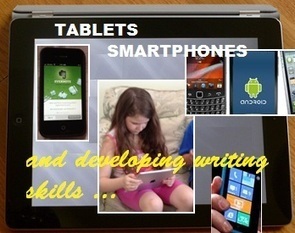
![How Does Writing Affect Your Brain? [infographic] | Scriveners' Trappings | Scoop.it](https://img.scoop.it/t2QxiGuHngFviiq1M1BetDl72eJkfbmt4t8yenImKBVvK0kTmF0xjctABnaLJIm9)





